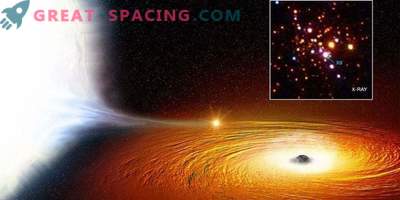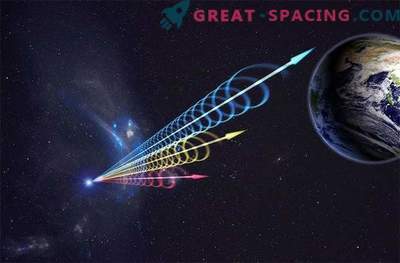
Astronomers magnified a small area of an X-ray image directly surrounding the supermassive black hole of our galaxy, getting the most detailed X-ray image to date, and they seem to have stumbled upon a mysterious place where stars die.
Sagittarius A * is a mysterious compact radio source surrounding a supermassive black hole in the center of our galaxy. This black hole, whose mass is 4 million times greater than the mass of our Sun, dominates this region, playing the role of a gravity well. Scientists have spent a lot of effort in trying to understand the population of stars and other star formations that are in close proximity to Sagittarius A *. But exploring these extreme conditions from a distance of 25,000 light years is not easy.
However, by measuring the X-ray spectra of the area nearby the black hole, astronomers gradually figure out some details of Sagittarius A *. According to a new study published in the journal Nature, there is a population of “dead” stars located in the shadow of a black hole.
Using data from NASA's NuSTAR X-ray space telescope, physicist Kerstin Perez from Haverford College, Pa., And his colleagues were able to decipher x-ray signals, and it appears that some sources are consistent with a large population of white dwarfs. White dwarfs are remnants of larger stars that have run out of hydrogen fuel and have died. Our Sun, for example, after running out of its fuel in about 5 billion years, will swell into a huge red giant, and then tear itself to shreds, throwing away a huge amount of solar matter. This will cause chaos in the solar system, destroying the planets and spawning a new planetary nebula of hot gas. In the center of all the confusion will be a white, glowing ball - a white dwarf.
Due to previous studies of white dwarfs in other places of our galaxy, scientists have deciphering their X-ray profiles. Therefore, studying the small area surrounding Sagittarius A *, Perez's team was amazed by the huge amount of white dwarfs in this region. In short, it seems that they stumbled upon the “mass grave” of dead stars.
“The galactic center is a region filled with x-ray sources. It contains the remnant of the Sagittarius A East supernova, filled with stellar winds in the Sagittarius A * region. - write the researchers in an article in the journal Nature.
"Almost all sources of radiation are located in the galactic center," a NASA Jet Propulsion Laboratory said in a press release. "This region is overflowing with low-energy X-ray sources." In this X-ray confusion, emissions are released that are not associated with other known sources of signals, such as thick molecular clouds and dust.
"The natural explanation of these radiation sources are intermediate polar (of the type of variable double star), which have a complex spectrum of all accreting magnetic white dwarfs."
There are other possible explanations, such as the anomalous population of pulsars (fast-rotating neutron stars), but the most likely source of signals is a large number of white dwarfs orbiting around the supermassive black hole of the Milky Way at a distance of 10 parsecs (33 light years).
If these are really white dwarfs, then how did they get there? Researchers cannot give an accurate answer, but these observations provide valuable information for understanding stellar dynamics in the immediate vicinity of a supermassive black hole of the galaxy.











































